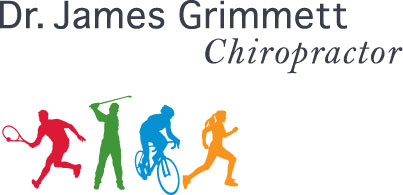It’s rare for a day in clinic not to be asked what a good stretch is for this or that tight muscle. Typically if we have a tight muscle, and I include fascia when referring to muscle, the tendency is to try to stretch it out. Logically, that seems like a good idea. After all, we want the muscle to regain that comfortable feeling of its normal resting state.
Unfortunately, as good as the intention is, the results from stretching tight areas are commonly short lived. In some cases stretching can even backfire resulting in an outright torn muscle.
If in fact the muscle is tight from just being overworked such as from the first day in the garden or from a long hike, easy stretching and some mobility can be all that is needed to ease the muscle. However, if you are not making progress with your stretching, you might want to rethink why the muscle has tightened up. Perhaps the muscle has reached its current state because it is weak.
Every tissue including muscle and fascia has a capacity or threshold. Once reached it will tighten up or tear. This is a guarding mechanism and when the muscle is in this protective state it does not want to be stretched.
Yes, the goal is to get that tight muscle and fascia to let go, but when it is due to weakness, an effective and safer approach is to strengthen it first. In doing just this you might find your stiffness disappears and the flexibility improved.
Weak tight muscles in the form of repetitive strain injuries are common. The resulting body’s expression of this are fallen arches (foot), knocked knees, stooped back, rounded shoulders and forward head carriage. We see these injuries in the clinic daily be it the office worker with neck pain and headaches from computer use or the triathlete sidelined with one of the many running, biking and swimming related injuries. In fact one of these forms of knee pain is why 50% of runners are not running.
Yes, as fit as ironman athletes are, they commonly have injuries due to specific weaknesses. In cases like these it is strongly advised not to stretch as this is likely to worsen the condition. When there is weakness recovery is typically sped up by simply not stretching.
A point to note: never stretch when experiencing pain.
I am not advocating inactivity. I am simply advising that with an injury stretching be avoided and that as soon as pain allows to first begin with strengthening. Sometimes this can be started immediately as even while in pain it is not unusual to find certain body movements and positions that ease the pain. If this is the case almost always strengthening can be safely started. Walking, again as pain dictates, is typically good to do as well for general mobility.
This general information by no means negates the need of seeking the appropriate health care when experiencing pain (e.g. medical doctor, chiropractor, physiotherapist…). It is very important to diagnose the specific problem so as to help ensure the appropriate care is given.
So where does stretching come in?
Oddly in the world of stretching evidence is weak at best. That said, it is hard to imagine that stretching does not play a significant role when it comes down to sports performance. Take Bruce Lee’s one-inch punch or Usain Bolt’s speed. It’s difficult to believe that some of that speed and power has not resulted from the stretching they incorporated into their training.
Another strong link to performance is the flexibility of power lifters. Power lifters are second only to gymnasts when it comes to flexibility. And certainly there are poses in yoga that exhibit great feats of strength.
When done for performance and the tissue is healthy it seems stretching can enhance the outcome be it speed for sprinting or power for weightlifting.
Listen to your body.
Be safe!
There should be no pain while stretching.
